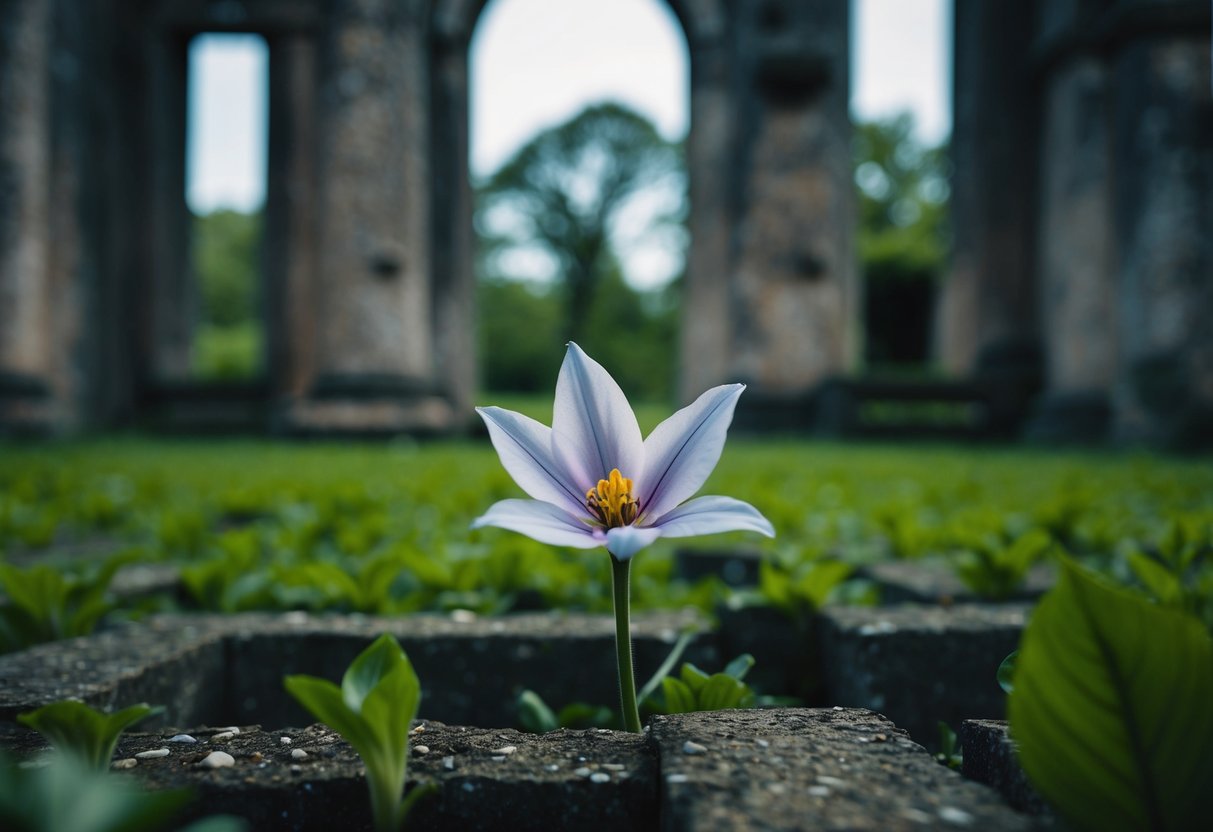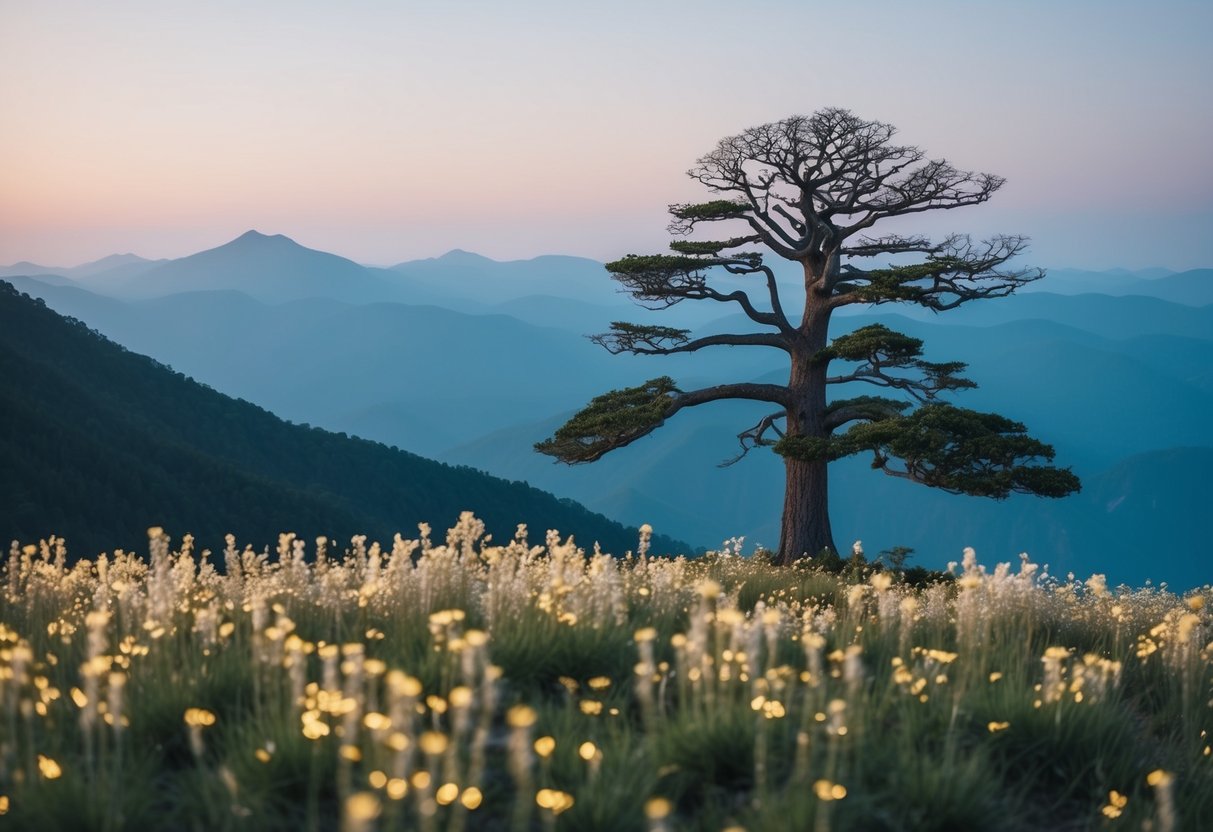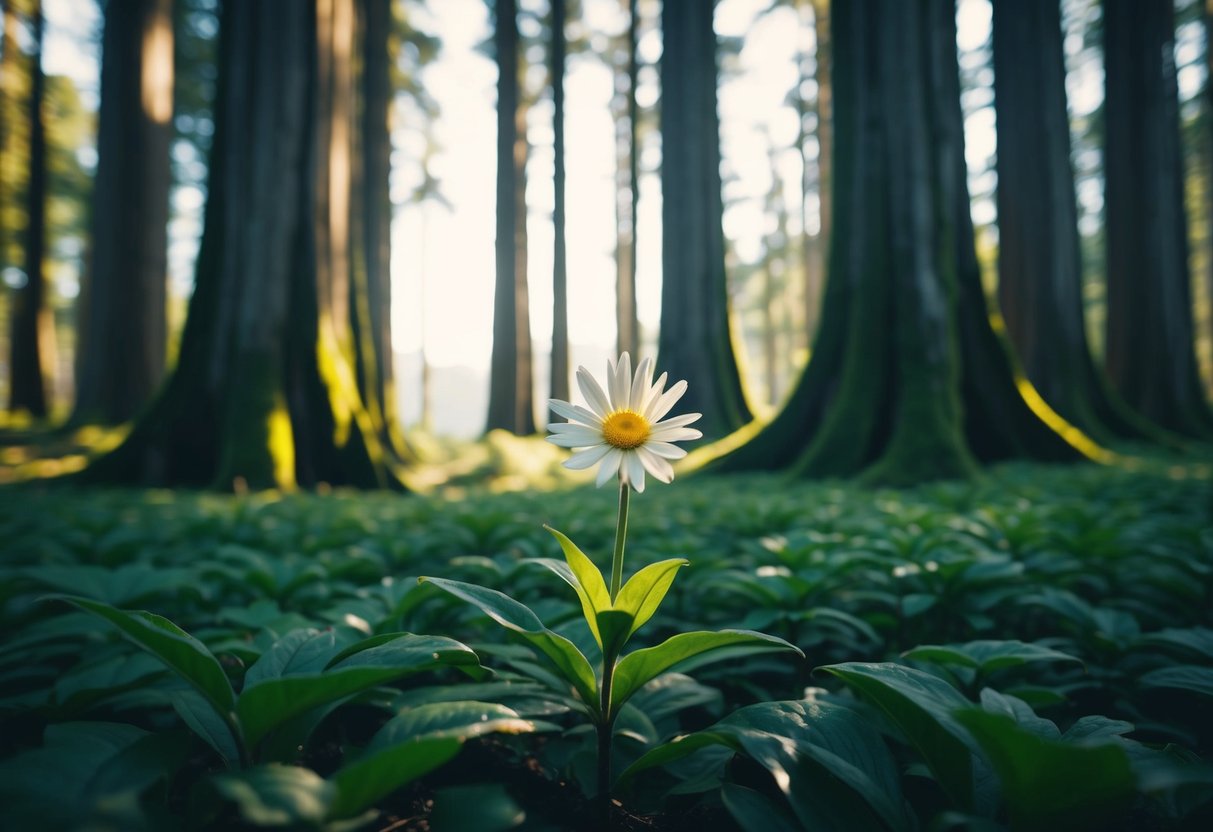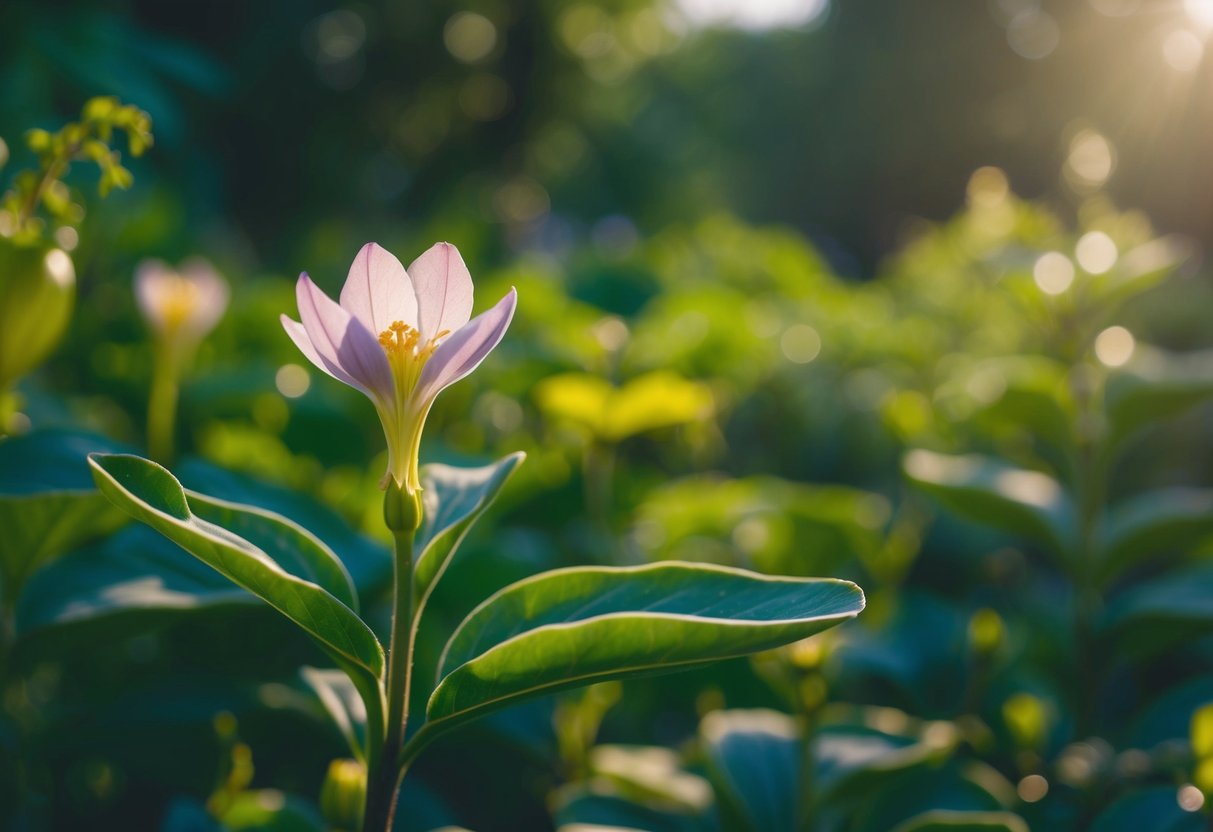What Flower Only Blooms Every 3000 Years? Discover the Myth Behind the Legendary Udumbara
Imagine a world where you could witness something so rare that it happens only once every 3000 years. The Udumbara flower, wrapped in mystery and legend, captivates people with its unique rarity. This mythical plant is said to bloom once every 3000 years, making it one of the rarest flowers on Earth.

As intriguing as it sounds, the Udumbara’s infrequent blooming has sparked interest and debate among enthusiasts. Enclosed within its fruit, some believe that this flower’s appearance signals the arrival of a special event or being. From tiny yet elegant blooms, the Udumbara has captured the imagination of people worldwide.
Finding a flower that blooms at such extended intervals makes you appreciate its beauty even more. This kind of rarity is a reminder of nature’s wonders, sparking curiosity about other rare flowers and their unique blooming cycles.
Dive into the world of the Udumbara and discover what makes this flower so special.
Legendary Blooms: The Youtan Poluo

The Youtan Poluo, often referred to as an auspicious flower, fascinates many due to its mythical reputation. Its rarity and significance in Buddhist traditions make it a captivating topic. By exploring its mythology, origins, and cultural impact, you’ll gain a deeper insight into this legendary bloom.
Mythology and Significance
In Buddhist beliefs, the Youtan Poluo is a flower with extraordinary qualities. It is often linked to the arrival of a great spiritual leader or transformation. Legend states that it blooms only once every 3,000 years, signifying an era of enlightenment and the presence of deep spiritual truths.
These tiny flowers are thought to be a sign of good fortune. According to some Buddhist scriptures, it represents the Dharma, a core concept in Buddhism. This adds a layer of mystique and sacredness to its existence. The association with profound spiritual events makes the Youtan Poluo more than just a rare flower; it becomes a symbol of hope and divine timing.
Origins and Descriptions
The Youtan Poluo is incredibly small, measuring only about 1 millimeter in diameter. It often grows parasitically on the leaves of other plants. You can find it in various parts of Asia, where sightings have been reported in recent years.
Some botanists are skeptical about the plant’s authenticity, viewing it as a possible myth. Despite this, numerous sightings grabbed worldwide attention, contributing to its legendary status. Although its existence remains unconfirmed by modern science, the captivating tales surrounding the flower continue to spark curiosity.
Cultural Impact in Buddhism
The Youtan Poluo holds special importance in Buddhism. It symbolizes rare and remarkable occurrences tied to Buddhist teachings and leaders, like the Buddha. Its blooms are seen as a time of awakening and signal the arrival of great wisdom or change in the world.
In historical accounts, the Youtan Poluo’s appearance has often been linked to notable Buddhist events. This further enhances its status as a revered and mystical bloom. The cultural power of this flower continues to inspire those who cherish Buddhist values, embodying spiritual ideals and aspirations.
Botanical Mysteries: The Udumbara Flower

The Udumbara flower is an enchanting yet mysterious bloom. Known for its rarity, it captivates those who are lucky enough to spot it. Its significance in Buddhist traditions adds a layer of spiritual intrigue.
Botanical Characteristics
The Udumbara flower is known for its extremely rare bloom, allegedly once every 3,000 years. These tiny, delicate flowers measure about 1 millimeter in diameter. Because of their small size, they often go unnoticed without a magnifying lens.
Botanically, the Udumbara is often linked to the plant Ficus racemosa, which produces flowers within its fruit. This unique feature explains why the blossoms are seldom seen. The Udumbara’s appearance has sparked discussions among botanists and spiritual enthusiasts alike, creating a bridge between science and legend.
Symbolism in Buddhism
In Buddhism, the Udumbara is dubbed an auspicious flower from heaven. Its appearance is traditionally seen as a rare occurrence, symbolizing a significant spiritual event. Some legends claim that it heralds the arrival of a great spiritual leader or a new era.
The Udumbara’s delicate beauty is celebrated as a mystical phenomenon. This belief has spread far beyond Buddhist circles, capturing the imagination of people around the world. The spiritual significance associated with these rare blooms reminds you of the interconnectedness of nature and spirituality.
World’s Rarest Flowers

Many flowers are not just beautiful but extremely rare, making them important to both botanists and flower enthusiasts. These flowers often face challenges like habitat loss and require special conservation efforts.
Conservation of Rare Species
To protect rare flowers from extinction, conservation efforts are essential. You can help by learning about these unique species and supporting botanical gardens that preserve them.
For example, the ghost orchid is critically endangered due to habitat destruction. Efforts in Florida and Cuba focus on maintaining its natural environment.
Conservationists also work to save the western underground orchid, a flower that grows entirely underground. Organizations collaborate to preserve the specific fungi needed for its growth. By supporting these efforts, you contribute to safeguarding rare plant species and their ecosystems.
Pinnacle of Rarity: Notable Examples
The corpse flower, or Amorphophallus titanum, stands out with its massive size and strong odor. This flower can take years to bloom, making each occurrence special.
Similarly, the Middlemist’s Red is so rare that only two known plants exist, one in New Zealand and another in the UK.
Other rare beauties include the Juliet rose, prized for its delicate petals and high value. The black bat flower captivates with its unusual color and bat-shaped leaves. These examples highlight the wonder and rarity found in the plant kingdom, making them truly noteworthy.
Blooming Phenomena: From Myth to Reality

Flowers that bloom rarely captivate our imagination, with tales often leading us to legends and myths. The udumbara flower, said to bloom every 3000 years, and other rare blooms engage curiosity and awe. Some are mythical, while others, like the queen of the night, are real yet infrequent.
Analyzing the 3000-Year Bloom
The udumbara flower is a mythical blossom in some Buddhist texts. It’s said to appear once every 3000 years, symbolizing a remarkable event. This legendary bloom gains attention not necessarily because of its physical characteristics, but due to the myths surrounding it.
Although some claim to have seen it in reality, much debate and skepticism exist about its actual existence.
Its size is tiny, measuring just about 1 mm, making it hard to notice without a magnifying lens (read more about it at Rare Udumbara Flower). While the physical evidence of its bloom remains scarce, the allure and mystery it holds keeps the legend alive in cultural narratives and spiritual discussions.
Other Infrequent Bloomers
Other flowers bloom rarely, though not as seldom as the udumbara. The queen of the night cactus, for example, opens its aromatic blooms just one night a year. This spectacle draws enthusiasts to witness its transformation under the moonlight.
Similarly, the franklin tree flower is known for its rare blooming pattern. It was once extinct in the wild and now survives in cultivated settings, flaunting its white blossoms. These plants, real and tangible, captivate with their elusive nature and the mystique of their sporadic blooms. Each has its own story, adding richness to the world of rare and infrequent bloomers.
Floral Sanctuaries: Botanical Gardens and Their Roles

Botanical gardens play a critical role in conserving rare and exotic flowers. These sanctuaries help educate the public and support research efforts. By visiting them, you can learn about the importance of plant conservation and marvel at unique plant species.
Fostering Rarity in Captivity
Botanical gardens are crucial for preserving rarest flowers, providing them a safe haven away from their natural habitats. With precise conditions, gardens can replicate environments needed for plants like the corpse flower, which blooms infrequently.
These controlled settings help protect species from threats like habitat loss or climate change.
Not only do gardens offer refuge, but they also play a vital role in breeding programs. This ensures the survival and study of these unique species. Having such plants in captivity also serves as a genetic reservoir, which can be invaluable for reintroducing them into the wild.
Education and Research
Education is a prominent focus of botanical gardens. Providing workshops, guided tours, and informational displays allows visitors to gain deeper insights into plant biodiversity and conservation.
As you walk through these gardens, you learn how plants contribute to ecosystems and human life, from food to medicine.
Research is also a significant aspect. Gardens often partner with universities to study plant biology, ecology, and genetics.
This collaboration results in valuable findings about plant growth, adaptation, and conservation strategies. For instance, studying how flowers adapt in a garden setting can aid conservationists in developing similar strategies for wild habitats.
Public Engagement and Awareness
Botanical gardens host special events, exhibitions, and interactive activities. These efforts raise awareness about the importance of preserving plant species.
When you visit these gardens, you aren’t just a spectator. You become part of an increased understanding and appreciation for plant conservation.
Events often highlight rare and exotic flowers, drawing attention to their beauty and rarity. By participating, you can learn what actions you might take to support conservation efforts locally and globally.
Gardens can inspire you to protect the environment, one plant at a time. They emphasize the interconnectedness of human actions and natural ecosystems.







